- About us
- Support the Gallery
- Venue hire
- Publications
- Research library
- Organisation chart
- Employment
- Contact us
- Make a booking
- Onsite programs
- Online programs
- School visit information
- Learning resources
- Little Darlings
- Professional learning
Angus Young (b. 1955), guitarist/songwriter, was a founding member of Australia's most successful ever band, AC/DC. Glasgow-born brothers of The Easybeats's George Young (1946-2017), Malcolm (1953-2017) and Angus Young formed the band in Sydney in 1973, with Angus soon adopting his trademark school uniform onstage. Ronald 'Bon' Scott (1946-1980) had come to Australia with his family in 1952, aged six, had lived in Melbourne and Fremantle, where he joined a pipe band; had dropped out of school at fifteen; and had spent some time in custody. By 1974, Scott was working at a fertiliser plant by day and writing songs that he would try out with other musicians at night. Artistic differences had arisen between AC/DC and their lead singer, Dave Evans, and Scott had had a terminal falling-out with his own loose group, the Mount Lofty rangers. He liked AC/DC but thought they were too young to rock; they thought he was too old to rock; but their first jam session was enough to seal the first AC/DC lineup. The following year, with two albums and four huge singles in Australia, the band was signed to an international deal, but American success did not come until Highway to Hell reached number 17 on the US charts in 1979. Bon told Rennie Ellis in 1978 that he could see no end to it, but two years later he was dead, having inhaled his own vomit while 'sleeping off' a bender in a parked car in London. His grave in Fremantle is the most-visited grave in Australia. In mid- 2004 UK magazine Classic Rock rated Scott as number one in a list of the 100 Greatest Frontmen. Significantly, however, largely thanks to Angus Young's star status, the band weathered the loss of Scott and his replacement by Brian Johnston. AC/DC's Back in Black, issued five months after Scott's death, is said to be the second-highest-selling album of all time worldwide, after Michael Jackson's Thriller; it is the fifth-highest selling album in the USA alone.
Purchased 2010
© Rennie Ellis Photographic Archive
www.RennieEllis.com.au
Rennie Ellis (age 38 in 1978)
Angus Young (age 23 in 1978)
Bon Scott (age 32 in 1978)



On one level The Companion talks about the most famous and frontline Australians, but on another it tells us about ourselves.
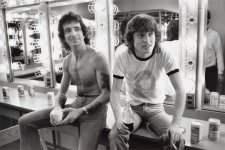
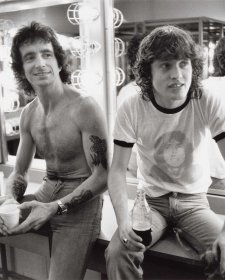

Bon Scott and Angus Young photographed by Rennie Ellis are part of a display celebrating summer and images of the shirtless male.
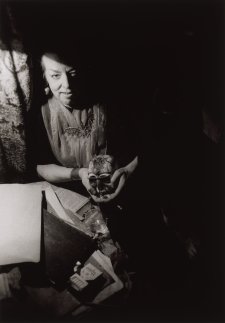
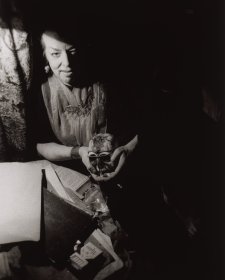
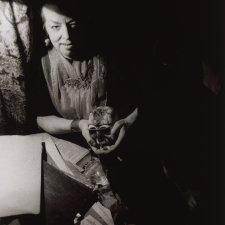
Rennie Ellis photographs the self-proclaimed 'Witch of Kings Cross'.